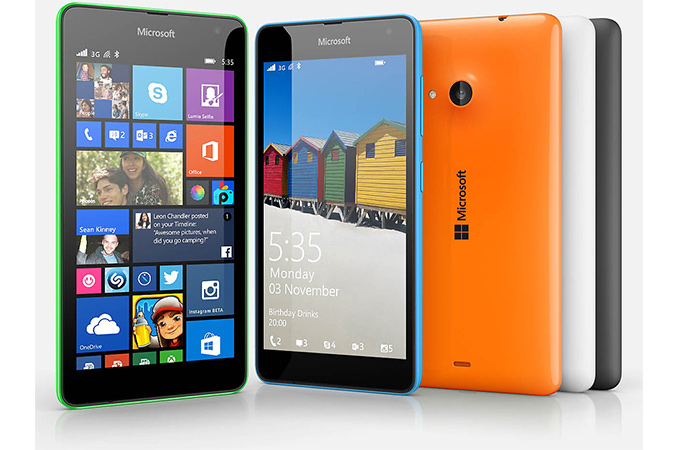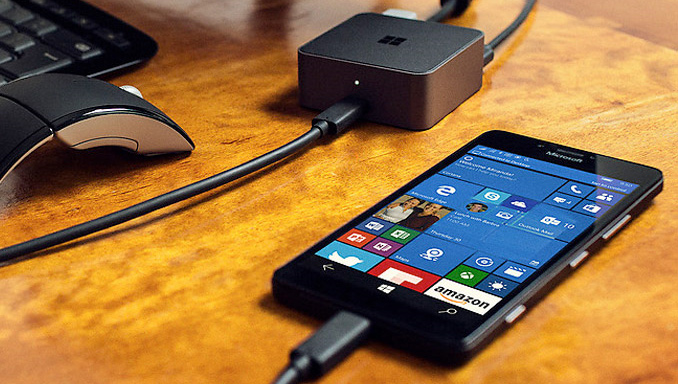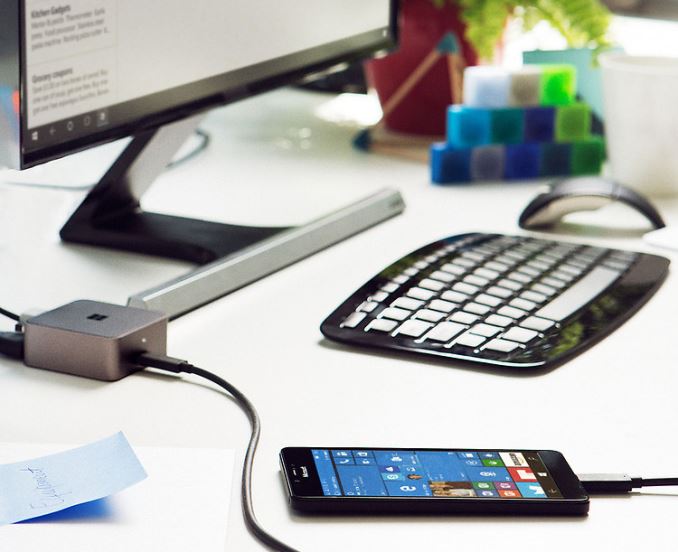Microsoft Streamlines Its Smartphone Business Again, Lays Off 1850 People
by Anton Shilov on May 25, 2016 4:45 PM EST- Posted in
- Smartphones
- Microsoft
- Nokia
- Lumia
- Windows 10 Mobile

Microsoft on Wednesday announced another reorganization of its smartphone business with plans to streamline operations and eliminate redundant personnel. The company will lay off 1850 of its employees in Finland and other countries and will take a $950 million charge. The actions seem to be in line with Microsoft’s plans to focus on development of flagship smartphones and leave the market of mass handsets.
When Microsoft closed its acquisition of Nokia in late April, 2014, it received approximately 25,000 new employees from around the world, who were involved into development, production, sales, and distribution of smartphones and feature phones. Shortly after, in July, 2014, Microsoft laid off 12,500 former Nokia staff as a part of its major reorganization, when it let go 18,000 Microsoft employees in total. The first wave of dismissals eradicated numerous positions at Nokia and shut down the division, which developed software for feature phones, leading to eventual elimination of Asha devices from Microsoft’s lineup.
A year after the company announced the first phase of streamlining, the software giant revealed further plans for phone business restructuring. In July, 2015, Microsoft decided take an impairment charge of approximately $7.6 billion related to assets associated with the acquisition of the Nokia Devices and Services business, and take a restructuring charge of approximately $750 million to $850 million. As part of its second phase of optimizations, the company laid off another 7,800 former Nokia employees globally. Besides, Microsoft announced their intentions to focus on flagship smartphones and generally to phase out inexpensive handsets going forward.
Today’s announcement further eliminates 1350 jobs in Finland as well as 500 additional jobs globally. The actions are to be fully completed by July, 2017, and will cost Microsoft approximately $200 million related to severance payments. Microsoft further noted that sales teams based in Espoo, Finland, will not be affected by the layoffs.
As a result of its optimizations of the handset business, by mid-2017 Microsoft will have eliminated approximately 21,650 former Nokia employees out of the iniitlal ~25,000 who joined Microsoft in 2014. Moreover, as 4,500 former Nokia staff are set to join FIH Mobile or HMD Global in the coming months, it means that by mid-2017 the absolute majority of the former Nokia employees will be gone from Microsoft.
Microsoft did not reveal any new plans concerning its smartphones going forward, but repeated what it said in 2015: the company will concentrate on flagship models and will support its traditional hardware partners with development of their smartphones featuring Windows 10 Mobile. The software giant sees security, manageability and Continuum feature as its key strengths on the smartphone market going forward, which essentially indicates that the company sees enterprises as the main customers for its handsets. Microsoft did not mention its PureView camera and other consumer focused assets it got from Nokia as its unique advantages to address consumers, which may indicate that the company no longer considers consumers as its main customers in the smartphone world.
“We are focusing our phone efforts where we have differentiation — with enterprises that value security, manageability and our Continuum capability, and consumers who value the same,” said Satya Nadella, chief executive officer of Microsoft. “We will continue to innovate across devices and on our cloud services across all mobile platforms.”
What the head of Microsoft did mention is that the company will continue to offer cloud-based services to all mobile platforms. Again, this is not something new as it emphasizes Satya Nadella’s cloud approach to mobile and his reluctance to fight against Apple, Google and Samsung in the world of mobile platforms and mobile hardware.
Source: Microsoft












78 Comments
View All Comments
inighthawki - Thursday, May 26, 2016 - link
It's a tradeoff. The DX kernel is really nice to have since it makes behavior across drivers more consistent and reliable, but at the same time has the drawback that it is an OS level component, and so new features will seldom, if ever, be backported.Vulkan (and other APIs like Mantle, OpenGL, etc) still run on top of the DX kernel, but they force the driver to implement all the missing features, sometimes with really awkward layers on top.
For example, memory management in the DX kernel in Windows 7 (actually for all WDDM 1.x, so Vista through 8.1) works by providing a list of allocations that need to be resident each time work is submitted to the GPU. The DX kernel's memory manager is then in charge of paging in that memory and running the workload. The problem of this design is that it has a high cost for a large number of allocations, and doesn't support bindless textures (You cannot submit a list of allocations if you do not keep track of which ones you bound to the pipeline that frame). Vulkan and Mantle handle this by simply creating a giant list of every allocation ever created and submitting it with ever piece of rendering work. The overhead can get pretty high.
WDDM 2/DX12 created a new memory management system where user mode can request a certain allocation to be part of the residency set or not, and can avoid the list entirely. They also expose per-application "budgets" which inform you about overall system memory pressure and when you can use more memory or should trim your working set to play nicely with everything else. This functionality is exposed by the ID3D12Device::MakeResident/Evict APIs.
So how does Vulkan support it? They just don't. That's how they support every OS - they just ignore certain things like memory management on the platforms where it exists. The closest alternative to evicting an allocation in other APIs is to just completely destroy the resource (freeing the memory for someone else), then recreate it and repopulate/copy the contents again later. Creating and destroying resources will be orders of magnitude slower than just inserting and removing from a list.
BurntMyBacon - Thursday, May 26, 2016 - link
@QinX: "refusing to bring console exclusives to PC, even if they might be 1 year later for extra cash grabbing."Wait! Did you just suggest Microsoft not cash grabbing was a BAD thing? (0_0)
BurntMyBacon - Thursday, May 26, 2016 - link
@inighthawki: "DX12 depends on numerous kernel-level changes in the WDDM 2.0 driver model that is not easily backported to older OSs."True. Though, its Microsoft's fault that this is misunderstood. They've used DX to drive sales of a new OS before. Also, their nearest competitor Vulkan is putting out the effort to work with previous versions of windows. I give Microsoft only a little sympathy in this situation.
BurntMyBacon - Thursday, May 26, 2016 - link
Need edit/delete feature.Flunk - Wednesday, May 25, 2016 - link
I used to be a Windows Mobile fan, but after how badly Microsoft handled the Windows Phone 7-8 transmission I bought a Nexus 5 and never looked back. Microsoft hasn't had a competitive Phone platform for years and they're so slow implementing features that the situation is never going to change. They're outclassed, they know it and they've given up trying.damianrobertjones - Thursday, May 26, 2016 - link
Let us know when you can no longer update your Nexus 5! (No, not with cooked roms either)tim851 - Thursday, May 26, 2016 - link
The Nexus 5 was released in 2013 and it's getting Android N, so will be supported until at least 2017.Is there a Windows device older than the Nexus 5 getting Windows 10 Mobile?
nikon133 - Sunday, May 29, 2016 - link
Hmm... they had quite a few W10M updates in 2016, I don't think they gave up on mobile platform, really. And speaking of which, W10M went from glitchy to very stable on my work Lumia 830, since I did an upgrade in late 2015.My old Lumia 920 is not getting official W10M update. While I do find that disappointing, realistically 920 does feel a bit sluggish on 8.1 these days. Especially with load times. Apps run OK in general but it does take some chunky time to load Skype and some others... so eventually, if W10M would make my 920 even less responsive, then no thanks - I'd rather keep it on 8.1 while it lasts. Back in the days, I was really pissed when Apple nagged me into updating 3Gs to iOS6, rendering my phone from quite useful to pretty much dead horse. 3Gs was already 4 years old and I thought that leaving it with iOS5 would make much more sense. Here and now, 920 is 3.5 years old, so I guess the same applies.
It is not that I don't think W10M cannot be optimized for 920. It is supposed to run on some current entry Win Phones, which are dual core and in general probably not any more capable than 920. But. Considering how many 920 were sold and how many might still be in use, I can imagine that investing a lot of time into optimizing W10M for that hardware could be somewhat pointless exercise.
At this point I'm thinking about W10M as a "hobby" for MS. They are not successful but they will keep trying - simply because there are not to many other segments where they can grow. Eventually, I think that this new prime directive - premium devices and enterprise - do make most sense. Enterprises care less for apps - in fact many will prefer to have bare phones with only work tools installed, likes of email, Skype for Business etc. which are core apps and executed quite well by Microsoft. Then, since so many enterprises do run on Microsoft platforms and service, it should be reasonably easy for MS to integrate phones into this - without depending on others to develop or allow development (as with youTube, google Maps etc). And finally, Surface line has proved that MS can do premium and can make it sustainable, if niche - Surface branding carries good vibe with it, we are seeing (and selling) more Surfaces and clones to our customers than traditional computers these days, throwing their phone into that bandwagon makes a lot of sense, imho.
JamesDean17 - Thursday, May 26, 2016 - link
If they would just kick off the guy that came out with the Metro interface in the first place and switch to an interface like Android or old Windows phones had back in the days that would pretty much solve their problems.Aside from that I think Microsoft has some Big Mole inside the company that's doing it's rivals evil work ruinning the companies products by pushing bad ideas forward.
piroroadkill - Wednesday, May 25, 2016 - link
Every last person on earth could see that Nokia going solely for Windows Mobile was going to run the company into the ground even further. Well, Stephen Elop, the Microsoft plant, ensured that.Now without even Nokia's good name, this is a dying ecosystem.